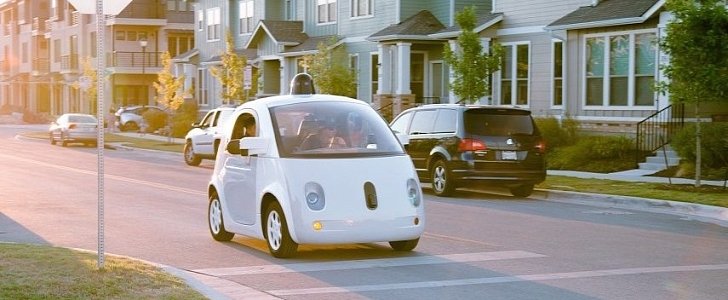They say the technological advancement that humankind achieved during the 20th Century is greater than that of all the years before put together. Well, we can't contest that, but if things keep up this pace, it looks like the same will be said about the fist two or three decades of the 21st Century.
The speed with which new inventions or improved versions of the things we already use appear makes it hard to keep track with where all industries are at any given moment. Virtual reality is quickly becoming mainstream, permanent mobile Internet access is cheaper than ever, and we're seriously talking about a mission to Mars. As for electric cars? Well, just look at what happened at this year's Paris Motor Show, and you'll get an idea: all the big headliners had some sort of electrification going on.
The second important topic in the automotive industry, besides alternative powertrains, is automating the actual driving of the vehicle. A lot of the major carmakers are currently caught up in a battle to come up with the best self-driving system, a fight where they are joined by various tech firms and new startups, all pushing to create a vehicle that doesn't need human intervention to get from A to B.
There are a few self-driving car testing heavens throughout the world, but none is busier than the sunny state of California. Home to the Silicon Valley, the peninsular state realized it is its duty to support this research, so now it's willing to go where no one has gone before.
The Governor of the state approved an act that allows the testing of autonomous vehicles that are equipped with neither brake or accelerator pedal, nor a steering wheel. Lacking these elementary amenities that help turn the human inside into a driver meant that their presence was no longer necessary, so the official decision notes that these vehicles are free to roam around on their own.
The new section will be included in the Vehicle Code, but in its current form, it only applies to one specific entity: the Contra Costa Transportation Authority. The testing will be conducted in just two locations - a business park in San Ramon and the GoMentum Station -, the vehicles must not exceed speeds of 35 mph (56 km/h), and a two-way communication must exist at all times between the cars and their researchers. That probably means that there is a kill switch that can be used at any moment.
This latest decision comes right after California's DMV decreed that people with no driving license will be allowed to use autonomous cars on their own (which makes sense: if you consider the AI to be the driver, then it's just like taking the bus), but also operated some legislation changes that could force Tesla to change the name of its driving aid system from "Autopilot." That's three steps forward or two steps forward and one step back, if you ask Tesla.
The second important topic in the automotive industry, besides alternative powertrains, is automating the actual driving of the vehicle. A lot of the major carmakers are currently caught up in a battle to come up with the best self-driving system, a fight where they are joined by various tech firms and new startups, all pushing to create a vehicle that doesn't need human intervention to get from A to B.
There are a few self-driving car testing heavens throughout the world, but none is busier than the sunny state of California. Home to the Silicon Valley, the peninsular state realized it is its duty to support this research, so now it's willing to go where no one has gone before.
The Governor of the state approved an act that allows the testing of autonomous vehicles that are equipped with neither brake or accelerator pedal, nor a steering wheel. Lacking these elementary amenities that help turn the human inside into a driver meant that their presence was no longer necessary, so the official decision notes that these vehicles are free to roam around on their own.
The new section will be included in the Vehicle Code, but in its current form, it only applies to one specific entity: the Contra Costa Transportation Authority. The testing will be conducted in just two locations - a business park in San Ramon and the GoMentum Station -, the vehicles must not exceed speeds of 35 mph (56 km/h), and a two-way communication must exist at all times between the cars and their researchers. That probably means that there is a kill switch that can be used at any moment.
This latest decision comes right after California's DMV decreed that people with no driving license will be allowed to use autonomous cars on their own (which makes sense: if you consider the AI to be the driver, then it's just like taking the bus), but also operated some legislation changes that could force Tesla to change the name of its driving aid system from "Autopilot." That's three steps forward or two steps forward and one step back, if you ask Tesla.

